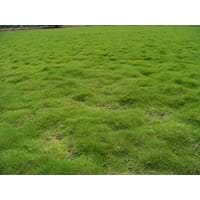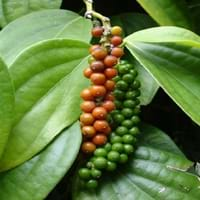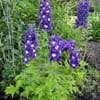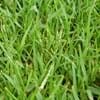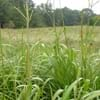Life Span
Perennial
Perennial
Type
Grass
Broadleaf Evergreen, Vines
Origin
South-Eastern Asia, Asia
India, Indonesia, Southeast Asia, Southern Asia
Types
Korean Lawngrass , Meyer Zoysiagrass , Manilagrass
Red pepper, Orange pepper
Habitat
Lower slopes, Sandy stream banks
Moist Soils, orchards, Temperate Regions
USDA Hardiness Zone
8-11
8-15
AHS Heat Zone
12 - 9
12 - 1
Sunset Zone
H1, H2, 8, 9, 12, 13, 14, 15, 16, 17, 18, 19, 20, 21, 22, 23, 24
H1, H2, 8, 9, 14, 15, 16, 17, 18, 19, 20, 21, 22, 23, 24
Habit
Clump-Forming
Clump-Forming
Flower Color
Green, Light Green
Lemon yellow
Flower Color Modifier
Bicolor
Bicolor
Fruit Color
Non Fruiting Plant
Red, Green, Light Green
Leaf Color in Spring
Light Green, Dark Green
Light Green, Dark Green
Leaf Color in Summer
Light Green
Light Green
Leaf Color in Fall
Green, Yellow green, Gold
Light Green, Dark Green
Leaf Color in Winter
Gold, Tan
Light Green, Dark Green
Leaf Shape
Grass like
Circular cordate
Plant Season
Spring, Summer, Fall, Winter
Spring, Summer, Fall, Winter
Sunlight
Full Sun, Partial Sun
Full Sun, Partial Sun, Partial shade
Growth Rate
Very Slow
Fast
Type of Soil
Loam, Sand
Loam, Sand
The pH of Soil
Acidic, Neutral, Alkaline
Acidic, Neutral, Alkaline
Soil Drainage
Average
Average
Bloom Time
Not Available
Not Available
Tolerances
Drought, Salt, Soil Compaction
Drought
Where to Plant?
Ground
Container, Ground
How to Plant?
Sod, Sprigging or Stolonizing
Seedlings, Stem Planting, Vegetative Reproduction
Plant Maintenance
Medium
Medium
Watering Requirements
weekly regular
Do Not over Water, Sprinkle water over foliage, Water every two or three days during warmer months
In Summer
Lots of watering
Lots of watering
In Spring
Moderate
Moderate
In Winter
Average Water
Average Water
Soil pH
Acidic, Neutral, Alkaline
Acidic, Neutral, Alkaline
Soil Type
Loam, Sand
Loam, Sand
Soil Drainage Capacity
Average
Average
Sun Exposure
Full Sun, Partial Sun
Full Sun, Partial Sun, Partial shade
Pruning
Remove damaged leaves, Remove dead branches, Remove dead leaves
A hard prune may be necessary if the plant becomes woody, Remove dead branches, Trim each shoot back to the first set of leaves
Fertilizers
All-Purpose Liquid Fertilizer
10-10-10 diluted liquid fertilizer, All-Purpose Liquid Fertilizer, Do not let fertilizers touch the leaves
Pests and Diseases
Army-worms, sod webworms
Aphids, Beetles, Root rot, Rust, Scab
Plant Tolerance
Drought
Heat Tolerance, Humidity, Salt and Soil Compaction
Flowers
Insignificant
Not Available
Flower Petal Number
Single
Single
Foliage Texture
Fine
Medium
Foliage Sheen
Matte
Matte
Attracts
Crickets
Aphids, Leafminer, Snails, Squirrels
Allergy
Not Defined
Oral Allergy
Aesthetic Uses
Beautification, Cottage Garden, Farmland, Ground Cover, Landscape Designing
Beautification, Cottage Garden, Decorating walls
Beauty Benefits
Not Available
Acne, Blackheads
Environmental Uses
Provides ground cover, soil erosion prevension on hill slopes
Fixes Nitrogen, Insect Repellent
Medicinal Uses
Unknown
Acid Reflux, Dysentry, Healthy teeth, Inflammation, Oral health
Part of Plant Used
Whole plant
Dried seeds
Other Uses
Used as a golf course turf
Culinary use, Oil is used for aromatherapy, Used in herbal medicines
Used As Indoor Plant
Insignificant
Yes
Used As Outdoor Plant
Yes
Yes
Garden Design
Container, Edging, Groundcover, Lawns and Turf, Mixed Border, Rock Garden / Wall, Tropical
Container, Feature Plant, Hedges, Screening / Wind Break, Tropical
Botanical Name
ZOYSIA tenuifolia
Piper nigrum
Common Name
Korean Velvet Grass
Peppercorn, Piper, Black pepper
In Hindi
कोरियाई मखमल घास
काली मिर्च
In German
Korean Samt Gras
Pfeffer
In French
herbe de velours coréenne
Piper nigrum
In Spanish
hierba de terciopelo de Corea
Poivrier noir
In Greek
hierba de terciopelo de Corea
μαύρο πιπέρι
In Portuguese
grama de veludo coreano
Pimenta-preta
In Polish
Not Available
Pieprz czarny
In Latin
Carl herba
nigrum piperis
Phylum
Angiosperms
Magnoliophyta
Class
Monocotyledonae
Magnoliopsida
Order
Cyperales
Piperales
Family
Poaceae
Piperaceae
Clade
Commelinids
Angiosperms, Monocots
Tribe
Cynodonteae
Not Available
Subfamily
Chloridoideae
Not Available
Number of Species
Not Available
Season and Care of Korean Velvet Grass and Black pepper
Season and care of Korean Velvet Grass and Black pepper is important to know. While considering everything about Korean Velvet Grass and Black pepper Care, growing season is an essential factor. Korean Velvet Grass season is Spring, Summer, Fall and Winter and Black pepper season is Spring, Summer, Fall and Winter. The type of soil for Korean Velvet Grass is Loam, Sand and for Black pepper is Loam, Sand while the PH of soil for Korean Velvet Grass is Acidic, Neutral, Alkaline and for Black pepper is Acidic, Neutral, Alkaline.
Korean Velvet Grass and Black pepper Physical Information
Korean Velvet Grass and Black pepper physical information is very important for comparison. Korean Velvet Grass height is 2.50 cm and width Not Available whereas Black pepper height is 180.00 cm and width Not Available. The color specification of Korean Velvet Grass and Black pepper are as follows:
Korean Velvet Grass flower color: Green, Light Green
Korean Velvet Grass leaf color: Light Green and Dark Green
Black pepper flower color: Lemon yellow
- Black pepper leaf color: Light Green and Dark Green
Care of Korean Velvet Grass and Black pepper
Care of Korean Velvet Grass and Black pepper include pruning, fertilizers, watering etc. Korean Velvet Grass pruning is done Remove damaged leaves, Remove dead branches and Remove dead leaves and Black pepper pruning is done A hard prune may be necessary if the plant becomes woody, Remove dead branches and Trim each shoot back to the first set of leaves. In summer Korean Velvet Grass needs Lots of watering and in winter, it needs Average Water. Whereas, in summer Black pepper needs Lots of watering and in winter, it needs Average Water.
